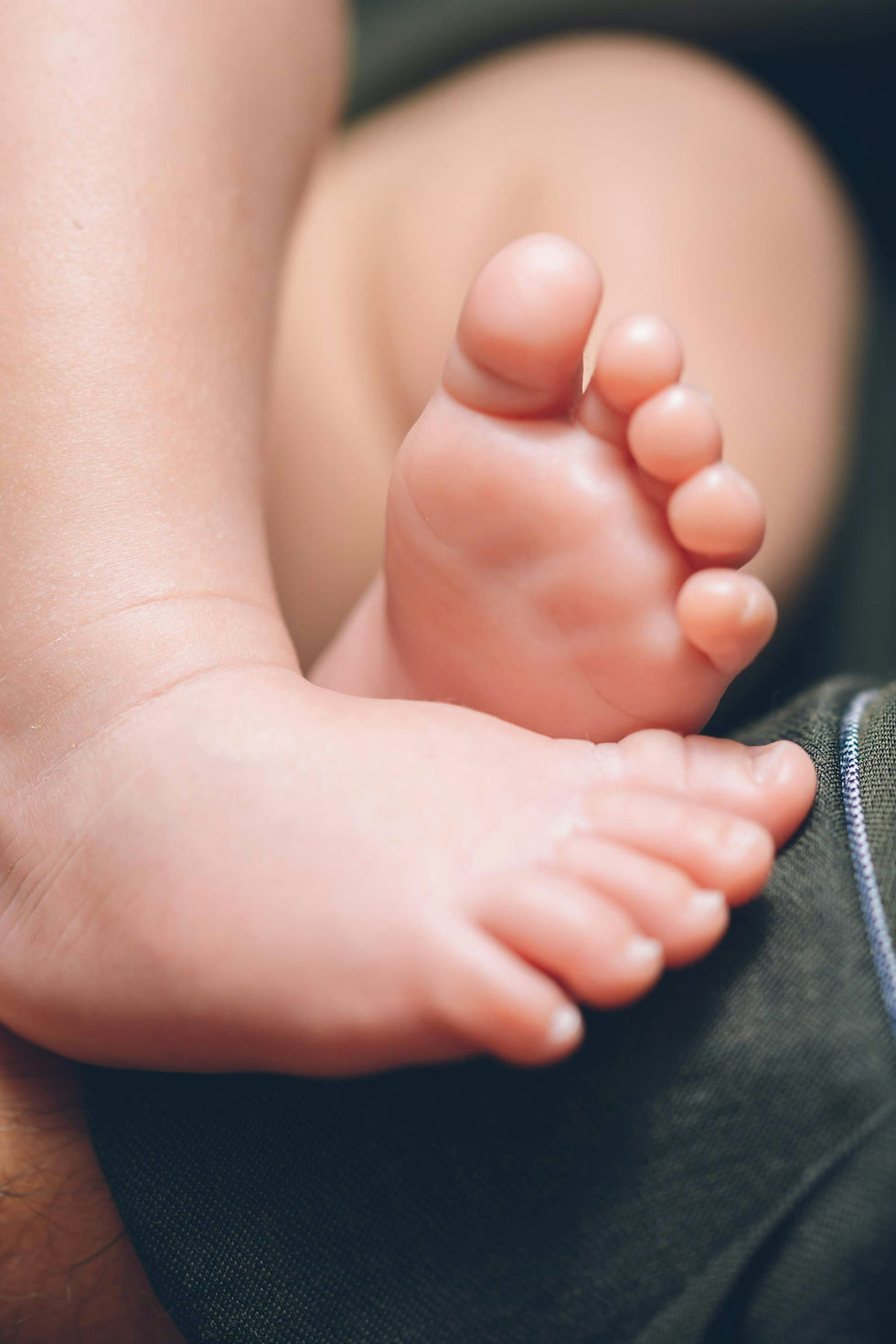Hypermobility in Young Children: What It Is, What to Look For and How You Can Support Their Growing Bodies
- Sam Chetwood

- 2 days ago
- 3 min read
If your child has extra-bendy joints or slightly “wobbly” movements, it’s possible you’ve received a diagnosis of hypermobility. It’s a common condition in young children and, in most cases, nothing to worry about. Many little ones are naturally flexible and most will grow stronger and steadier as their muscles develop.
However, understanding what hypermobility might look like and how you can support your child can make a huge difference to their comfort, confidence and long-term foot health.
What Is Hypermobility?
Hypermobility simply means that a child’s joints can move beyond the normal range of motion. Their tendons, ligaments and muscles, which usually act like strong little guide ropes around the joints, are a little looser, offering less support than usual.
That extra movement and flexibility can mean:
Joints feel less stable
Muscles must work harder to keep everything aligned
Children may tire more quickly or want to avoid certain activities
Coordination might look a little off in the early years
Likely to be slower to take first steps
It can also interfere with the proprioceptive receptors in the joints, the clever sensors that interact with the environment and tell the body where it is in space. When these signals are slightly fuzzy, movements can look less controlled or “clumsy,” even when the child is perfectly capable.
As children grow, explore, climb, run and play, their muscles strengthen and their coordination improves. For most, hypermobility becomes far less noticeable with age.
Signs Your Child May Be Hypermobile

Every child is different, but common signs include:
Very flexible or “bendy” joints
Feet that roll inwards
Knees that appear to “lock back”
Preferring to sit in a W-position
Fatigue or complaints of tired legs after activity
Clumsiness or less coordinated movements
Avoiding long walks or particularly active play
Pain around joints (usually towards the end of the day)
Hypermobility often runs in families, so if you were a bendy child, your little one might well be too!
Does Hypermobility Affect Long-Term Mobility?
For the vast majority of children, hypermobility is a developmental phase rather than a long-term concern. As their muscles strengthen and their bodies mature, those extra-loose joints generally become much more stable.
Children typically:
Develop stronger core and leg muscles
Improve balance and proprioception
Become more confident and coordinated
Experience less fatigue over time
Only a very small number of children experience ongoing issues associated with hypermobility and these cases are usually supported by paediatricians or physiotherapists.
For most families, reassurance, supportive footwear and gentle strengthening activities are all that’s needed.
What Footwear Is Best for a Hypermobile Child?

Footwear plays a huge role in helping hypermobile children feel stable and supported, particularly during the toddler and early school years when they’re still building strength.
Your paediatrician or podiatrist may give personalised advice depending on your child’s needs, but this guide provides a good starting point.
And of course, if you would like our guidance on what’s best for your child, we’re ready to help. Supporting growing feet is what we do best.
Strengthening Activities for Hypermobile Children
Strengthening doesn’t have to be formal or complicated. In fact, the best strengthening exercises for toddlers and young children look just like play. In fact, the more they join in and play with other children, the better.
Here are some simple ideas:
Barefoot play (where safe) to encourage natural strengthening of the small muscles in the feet and ankles.
Balance games like standing on one leg, stepping stones, wobble boards or “tightrope walking” along a straight line.
Animal walks... bear crawls, crab walks, bunny hops, lots of fun and fantastic for core strength.
Climbing on playground equipment, soft play centres, climbing frames, all brilliant for building stability.
Scooting, cycling and swimming are all great for leg and core strength without high impact.
When Should You Seek Advice?
While most cases are mild, you should speak to a GP if your child has:
Persistent pain
Frequent falls
Delayed gross motor milestones
Significant fatigue
Joint dislocations
Early support can make a big difference, but just to reiterate, for most children, hypermobility is simply a part of growing up. Simply understanding the condition and what you can do to support them will be all you need.
With the right footwear, plenty of play and a bit of patience, hypermobile children develop the strength and coordination they need to feel stable and confident in their bodies.
And if you ever have questions, want reassurance or need help choosing shoes that support healthy development, we’ll be here to guide you.




Comments